Email Marketing
10 Ways to Make an Email Referral Campaign that Converts
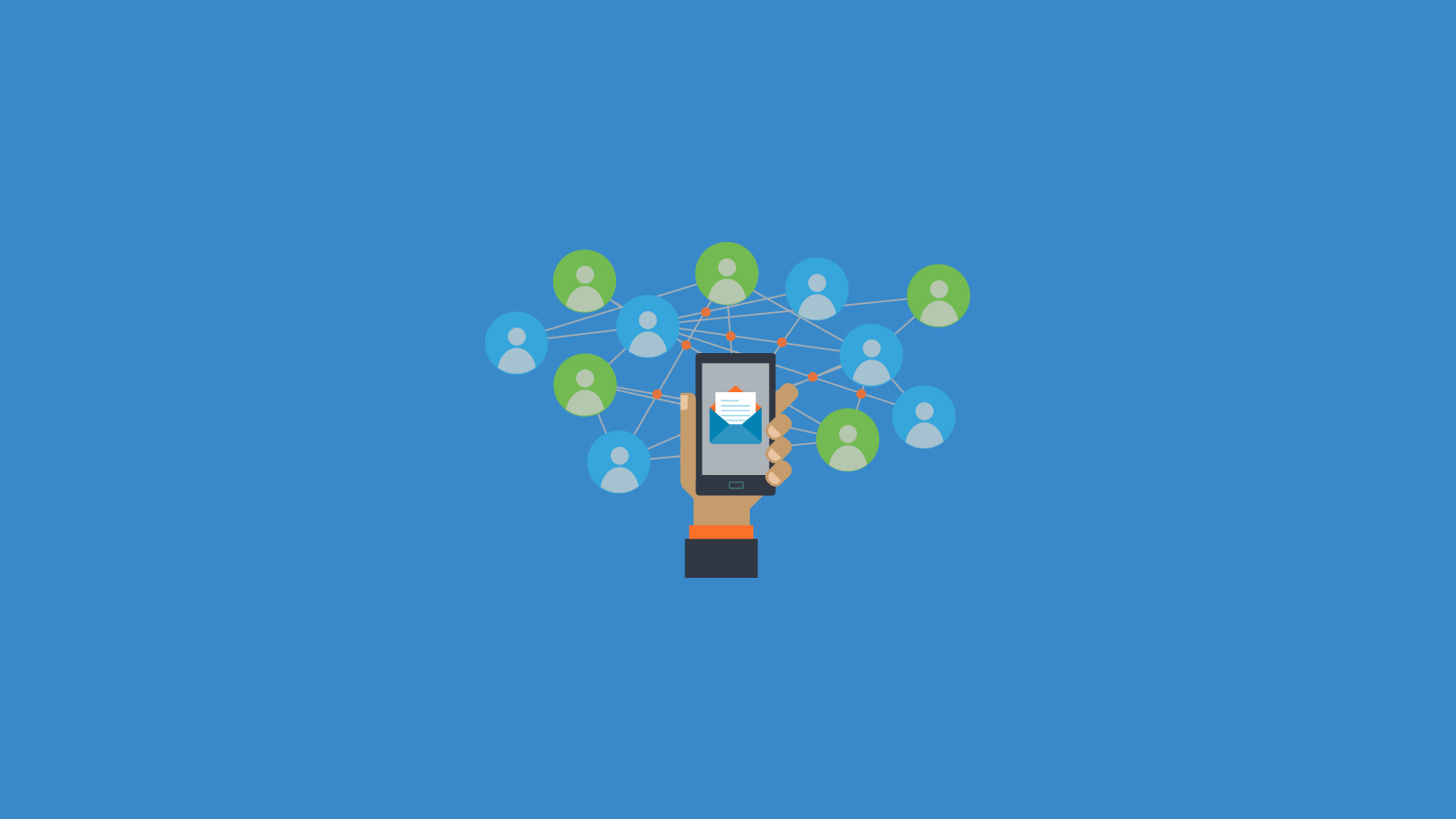
Email Marketing

Achieving marketing goals and growth month over month, year over year is challenging. However, marketers often overlook one of the most effective marketing strategies to acquire new customers: referral marketing. In other words: drawing on existing customers to acquire new subscribers through referral email programs.
In fact, a Neilsen Trust Study found that customer referrals are the most trusted form of advertising by a large margin, as shown below.
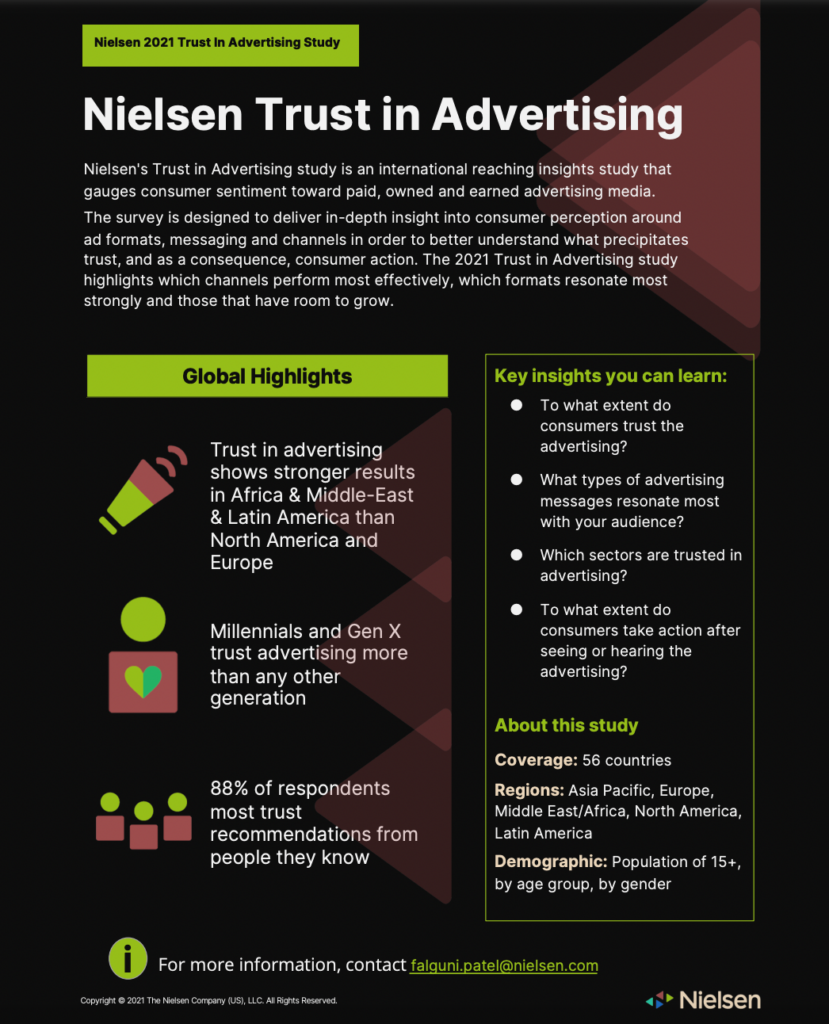
With almost 50% of customers choosing service-based businesses based on the recommendations of their friends, you’re only hurting yourself if you aren’t incorporating referral marketing into your strategy. Let’s go over why referral emails are important and leave you with ten ways to create a successful email referral campaign.
Referral emails are essentially your basic ecommerce email and more. Marketing emails need to introduce your brand, engage your customer, and drive them to click through on your call-to-action (CTA). Referral emails go beyond that. They need to generate buzz about your brand and the referral award to inspire loyal customers to share your brand with their audience.
In other words, a good referral email:
Referral emails are important because they recruit existing customers to promote your company name and bring in new customers. Think of this as the difference between a cold call and an introduction made by an acquaintance. Which one are you more likely to trust? The same can be said of potential customers. They’re far more likely to trust the words of a perceived peer in their community than any flashy marketing campaign your brand can put together.
In the game of advertising, word of mouth is king. (Or, in this digital age, social proof.)
Referral emails sound great, right? Well, without further ado, let’s dive in. Here are 10 ways to lean on current customers to build a referral email to introduce your referral program and generate new leads:
Let’s dig into each of these below.
Before you start sending emails asking for a referral to every customer on your email list, it’s critical to zero in on those customers who are over the moon about your service. Think about it: If you send an email to an unsatisfied customer, it’s unlikely they’ll respond with the kind of words/actions you desired. This can tank your open rate and the success of your referral program.
The best way to uncover your loyal customers is through the Net Promoter Score (NPS). To figure out the NPS of your company and for a single subscriber, all you have to do is send them an easy survey with this question: How likely is it that you would recommend our brand/product/service to a friend or colleague? (Answers are based on a 0-10 scale).
Here is a templated example below:

You can use tools like SurveyMonkey to send this type of questionnaire and compile the results. After the person chooses 1-10, you typically ask one more question, which can be done on the next screen or in a follow-up email: “What’s the most important reason for your score?”
Someone that chooses 0-6 on the scale is labeled as a “detractor.” People who choose 7-8 are “passives.” Those who answered either 9 or 10 are “promoters.” Focus on the promoters and send them your referral email campaign for the best results.
If, for whatever reason, you can’t calculate your NPS, you can also look at past customer behavior to understand someone’s affinity for your company. For example, if you can see that someone has been a customer for 5+ years, they’d probably be a good referral. Positive social media interaction can be a sign of promoter status.
For example, we received this shout-out on Twitter:

Tweets like this are referrals themselves and can be used as social proof on your website to aid the conversion process.
Remember, referrals can be anything from a “like” on Facebook all the way to an actual sale. Now that you know who you should be sending these referral email campaigns to, let’s talk about ways to make these emails compelling and effective.
While this may seem obvious, it’s often overlooked. Personalization is much more than using a merge tag to insert the first name. If you’re a retailer asking for a rating, review, or referral, mention what exactly was purchased in the email or the email subject line.
In the example below, the purchaser is asked to share (aka refer) their latest purchase with their friends on Facebook and receive an incentive in return.
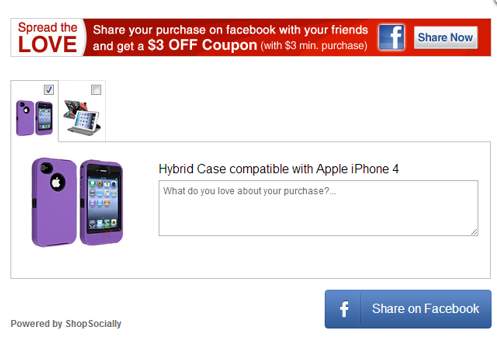
Now, you may notice there’s no subscriber name in this personalized email. However, the personalization in this referral request is the past purchase. It dynamically inserts the product the customer purchased, which makes it relevant and increases the likelihood of the customer taking action on the referral campaign.
Your entire customer base isn’t motivated by the same rewards. Some may be looking for a monetary incentive, while others may want access to premium features or fun swag.
For example, Scentsy offers free products as a referral reward:
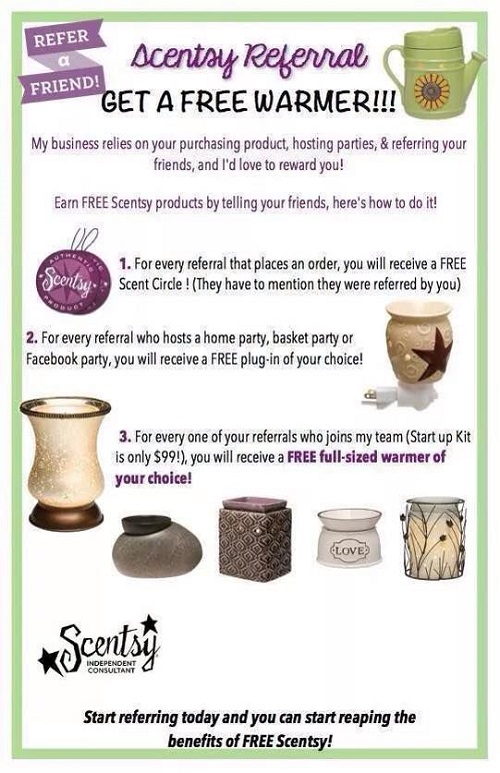
Conversely, you can also give a monetary incentive for a future purchase.
It’s important to remember that the incentive should correlate to the end goal of the referrer’s action. If you simply ask a customer to share a link on social media with their friends, the incentive should be smaller than one given upon the completion of a sale.
It’s important to offer both an incentive to the individual making the referral and the person acting on the referral. In fact, reciprocity is at the heart of social behavior, so having something in it for both parties will optimize your efforts.
Modcloth did a great job with this in the email below. Not only do they give both sides monetary incentives, but they also give a bonus incentive with the chance to win a $200 gift card. It’s a win-win-win.

Just like you optimize your landing page to make the buyer’s journey as easy and seamless as possible, the same effort should be put into the referral process. The more hoops you make someone jump through, the fewer referrals you’ll get. This is where pre-populated text and templates save the day.
The example below combines a double-sided incentive with a pre-populated form, making it easy for the customer to take advantage of the offer. They even let them choose if they want to send the offer via email or through Facebook, so all the customer has to do to get $20 off for themselves and their friends is enter email addresses and hit send.
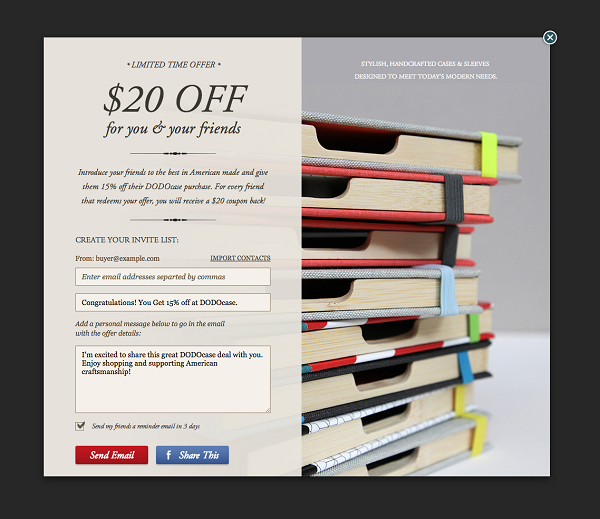
When you’re asking for referrals, generating unique links is critical to ensure you’re properly rewarding your customers and potential subscribers. There are different ways to generate these unique links, but leveraging your email service provider (ESP) to accomplish this task usually does the job.
If you’re sending your referral email campaign through your ESP, create a unique identifier for each recipient in order to generate individualized links. We use the EMAIL merge tag to insert the individual’s email address into the referral link.
Here is an example:
https://emailonacid.us1.list-manage.com/track/click?u=b6418bd90c647b0ab5f294717&idReferral=example@gmail.com
With this, you can effortlessly track the success of your referral campaign and follow through on your incentive promises.
If the end goal of your referral email is for your audience to share a specific link on their social channels, make sure they can share with ease!
Don’t convolute the sharing process by making your user create a whole new account. Use a single sign-on solution that directly navigates them to the login page for their respective social channel.
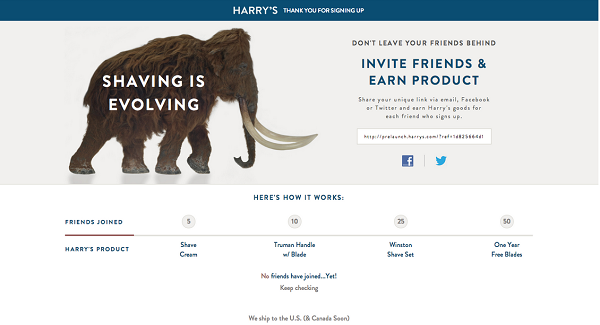
In the example above, Harry’s has the link ready. All the end-user has to do is choose if they want to share it on Twitter or Facebook, making it a seamless experience.
68% of companies rank email as the best channel for return on investment, but you’re leaving money on the table if you aren’t reaching your audience on other digital channels. Whether video, a paid ad, social or direct marketing, referral campaigns can come in many different forms.
Dollar Shave Club did an awesome video referral campaign below, and according to Entrepreneur.com, in the first 48 hours after the video debuted on YouTube, over 12,000 people signed up for the service, and by the end of the week, that number more than doubled to over 25,000.
While we’re obviously partial to email, the above example proves your referral efforts should stretch beyond the inbox.
After you’ve gone through all the effort to optimize your referral email campaign, it would be a shame for that email to end up in your customer’s inbox looking broken!
We offer a free, 7-day trial, which includes unlimited email testing in the most popular inboxes, so you don’t get egg on your face when you send these mission-critical emails to your clients.
And that’s creating a successful referral program in a nutshell! As always, don’t forget to reach out before you start sending. See how our Campaign Precheck tool can set your email marketing program up for success.